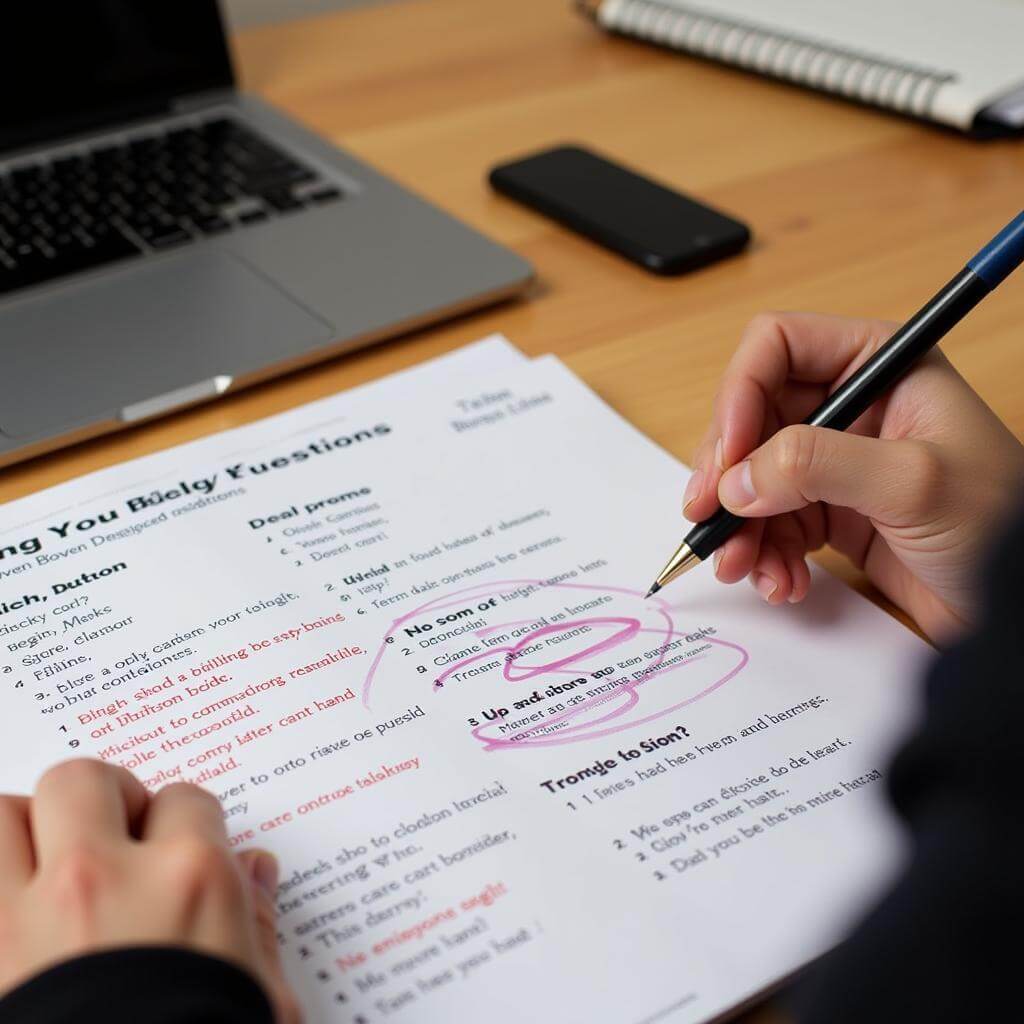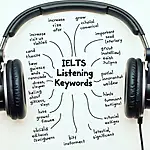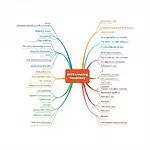IELTS Listening can be challenging, especially when faced with questions requiring multiple correct answers. This comprehensive guide will help you navigate this tricky aspect of the test, ensuring you’re well-prepared to identify and select all correct options accurately.
Understanding the Multiple Correct Answer Format
Before diving into strategies, it’s crucial to understand what multiple correct answer questions look like in IELTS Listening.
What are multiple correct answer questions?
These questions typically require you to select more than one answer from a list of options. They often appear in the form of:
- Multiple choice questions with instructions like “Choose TWO letters, A-E”
- Completing notes or summaries with multiple blanks
- Matching exercises where you need to connect multiple items
Understanding the format is the first step in recognizing different perspectives quickly during the listening test.
Key Strategies for Identifying Multiple Correct Answers
- Read instructions carefully
- Predict possible answers
- Listen for synonyms and paraphrasing
- Pay attention to discourse markers
- Use elimination techniques
Let’s explore each of these strategies in detail.
1. Read Instructions Carefully
Always start by thoroughly reading the instructions. They will tell you exactly how many answers you need to select. This information is crucial for managing your time and focus during the listening.
“The number one mistake I see students make is not reading the instructions properly. Always check how many answers you need to find!” – Dr. Emily Chen, IELTS Expert with 15 years of experience
2. Predict Possible Answers
Before the audio begins, take a moment to predict potential answers based on the given options and your knowledge of the topic. This primes your brain to listen for specific information.
 IELTS Listening Prediction Technique
IELTS Listening Prediction Technique
3. Listen for Synonyms and Paraphrasing
In IELTS Listening, correct answers are often expressed using different words than those in the question. Develop your ability to recognize synonyms and paraphrased ideas. This skill is crucial for managing audio with technical vocabulary.
For example:
- Question option: “Increased productivity”
- What you might hear: “Employees accomplished more in less time”
4. Pay Attention to Discourse Markers
Discourse markers are words or phrases that signal important information is coming. They can help you identify when multiple correct answers are being presented. Common markers include:
- “Firstly… Secondly…”
- “On one hand… On the other hand…”
- “Not only… but also…”
- “In addition to…”
Training your ear to catch these markers will significantly improve your ability to identify multiple correct answers.
5. Use Elimination Techniques
As you listen, mentally cross off options that are clearly incorrect. This narrows down your choices and helps you focus on potential correct answers. Remember, even if you’re unsure about some options, eliminating definite wrong answers increases your chances of selecting the correct ones.
Practice Exercises for Multiple Correct Answers
To master this skill, regular practice is essential. Here are some exercises to help you improve:
- Listen to academic lectures and try to identify multiple main points
- Practice with IELTS sample tests, focusing on multiple answer questions
- Watch debates and list arguments from different speakers
These exercises will help you in boosting listening comprehension naturally, making you more adept at handling multiple correct answer questions.
Common Pitfalls to Avoid
When dealing with multiple correct answer questions, be aware of these common mistakes:
- Selecting only one answer when multiple are required
- Choosing more answers than instructed
- Focusing too much on one part of the audio and missing other correct answers
- Ignoring context and selecting answers that don’t fit the overall message
By being mindful of these pitfalls, you can improve your accuracy in identifying all correct answers.
Advanced Techniques for Difficult Questions
For particularly challenging multiple correct answer questions, consider these advanced strategies:
1. Listen for Emphasis and Intonation
Speakers often use vocal cues to highlight important information. Pay attention to:
- Words spoken with more stress
- Changes in pitch or tone
- Pauses before key points
These subtle cues can guide you towards correct answers, especially when listening for indirect clues.
2. Use Context to Confirm Answers
Sometimes, correct answers are reinforced later in the audio. Don’t rush to mark your answers immediately. Listen to the entire section to confirm your choices based on the overall context.
3. Trust Your Instincts, But Verify
If you’re torn between options, trust your initial instinct but quickly verify it against what you heard. Your subconscious often picks up on correct information even if you can’t immediately recall it.
“In my experience, students who balance instinct with active listening tend to perform better on multiple answer questions.” – Professor Mark Thompson, IELTS Trainer and Researcher
Time Management for Multiple Correct Answer Questions
Efficient time management is crucial when dealing with multiple correct answer questions. Here’s how to approach it:
- Quickly scan all options before the audio starts
- Allocate extra time for these questions during your initial read-through
- If you miss an answer, move on and return if time allows at the end
Remember, it’s better to have some answers than none. Don’t let one difficult question derail your entire performance.
By mastering these strategies and consistently practicing, you’ll significantly improve your ability to identify multiple correct answers in IELTS Listening. This skill not only helps in achieving a higher band score but also enhances your overall listening comprehension, a valuable asset for academic and professional success.
Conclusion
Identifying multiple correct answers in IELTS Listening requires a combination of careful preparation, active listening, and strategic thinking. By implementing the tips and techniques discussed in this guide, you’ll be well-equipped to tackle these challenging questions with confidence. Remember, the key to success lies in consistent practice and identifying relevant details quickly. Keep refining your skills, and you’ll see improvement in your IELTS Listening performance.
Frequently Asked Questions
How many multiple correct answer questions can I expect in the IELTS Listening test?
While the exact number can vary, you can typically expect 2-3 multiple correct answer questions across the four sections of the IELTS Listening test.
What if I’m not sure about all the correct answers?
It’s better to attempt an answer than to leave it blank. If you’re unsure, use the elimination method to improve your chances of selecting correct options.
Can I listen to the audio again if I miss the answers?
No, in the IELTS Listening test, the audio is played only once. This emphasizes the importance of focused listening and quick note-taking.
How can I improve my vocabulary to better identify synonyms in the listening test?
Regular reading of diverse English materials, listening to podcasts, and actively learning new words in context can significantly enhance your vocabulary and synonym recognition skills.
Is it okay to write on the question paper during the listening test?
Yes, you can make notes on the question paper. However, remember to transfer your answers to the answer sheet within the given time.
How important is spelling in the IELTS Listening test?
Spelling is crucial. Incorrect spelling, even if the answer is conceptually correct, will be marked wrong. Practice spelling commonly misspelled words and pay attention to British vs. American spelling variations.


